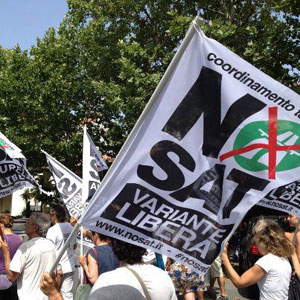This weekend we were all so engrossed in the Riace bronzes affair that we completely forgot (and in several cases, perhaps intentionally) to talk about the “Sblocca Italia” package presented on Friday by Matteo Renzi during the last Council of Ministers. The package will unlock already funded construction sites worth more than 30 billion euros and activate other resources worth more than 13 billion euros. The list of works was very clearly published in the Secolo XIX. Alongside the already financed works, many of which are enormously discussed (starting with the Turin-Lyon HST or theOrte-Mestre Highway), there are others that are less talked about but around which numerous discussions have arisen. One of these is the construction of theTyrrhenian Highway, which is to join Rosignano with Civitavecchia, thus completing a single highway (tolled, of course) from Genoa to Rome.

Today, the section from Rosignano to Civitavecchia is occupied by the Aurelia bypass to Grosseto (a beautiful freeway, four lanes, with a limit of 110 km/h), while from Grosseto to Civitavecchia, car traffic is forced to drive along the Aurelia highway, which despite being in several sections already four lanes, in many places still has two lanes and many level crossings. The pending 2 billion project would like to turn the Aurelia into a highway run by SAT (Società Autostrada Tirrenica): a private company that would become the concessionaire of what is now a free public road. Why is there strong opposition to the construction of the highway in the areas affected by the project? Let’s look at the main ones:
What, therefore, are the environmental associations and most of the citizens of Tuscany and Lazio asking for? Quite simply, that the section of the Aurelia between Grosseto and Civitavecchia be upgraded according to the 2001 ANAS project, which, moreover, had already been approved and financed by the Amato government in office at the time, and then set aside by the Berlusconi government in 2004 in favor of the highway project. Evidently, in Italy, major works have to be wasteful and harmful to citizens in order to be approved. In the meantime, citizens have organized themselves into committees to express their opposition to the project: anyone who wants to get information can read the Facebook page of the Territorial Committee NO SAT or the Association "Save Maremma from SAT."
Warning: the translation into English of the original Italian article was created using automatic tools. We undertake to review all articles, but we do not guarantee the total absence of inaccuracies in the translation due to the program. You can find the original by clicking on the ITA button. If you find any mistake,please contact us.